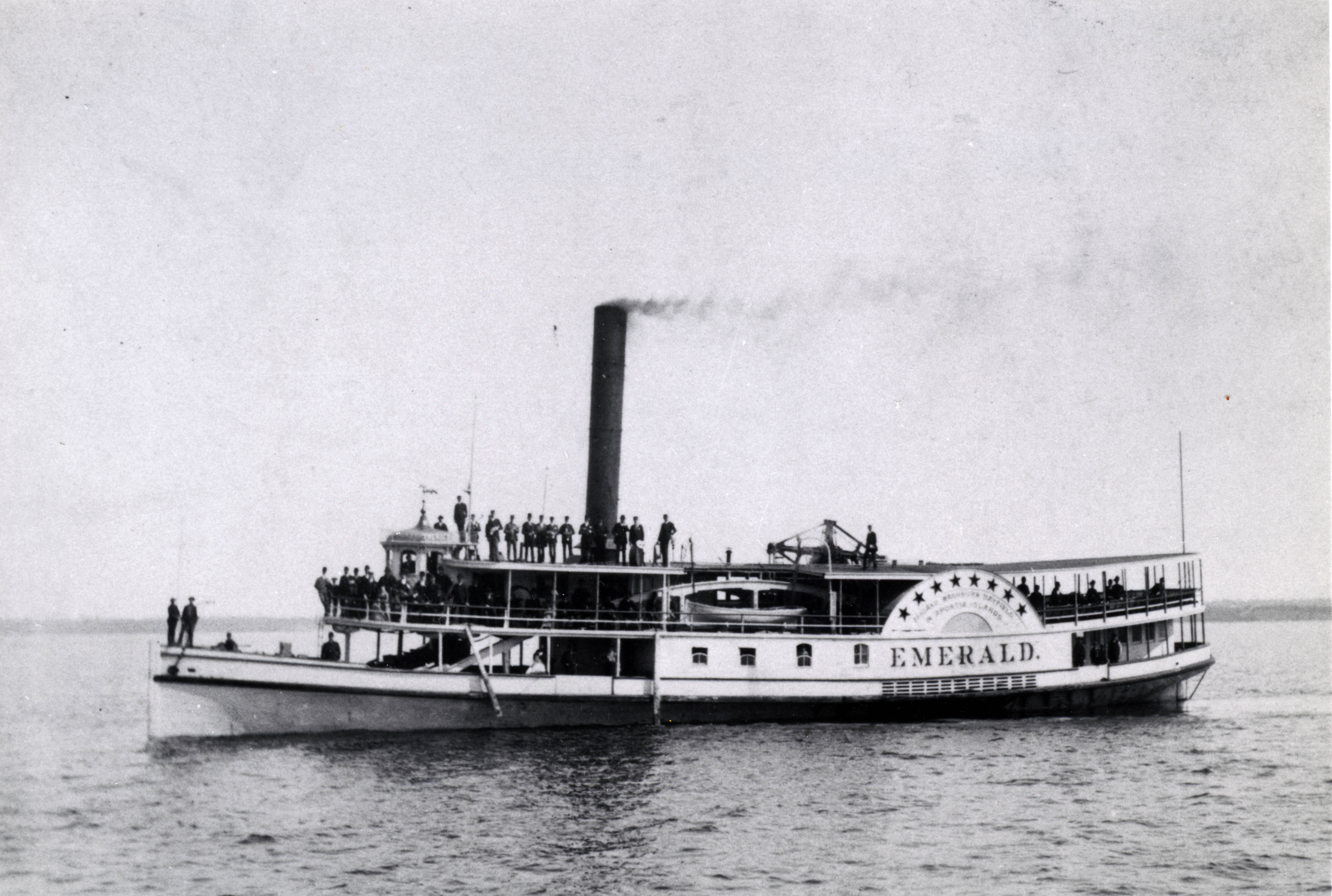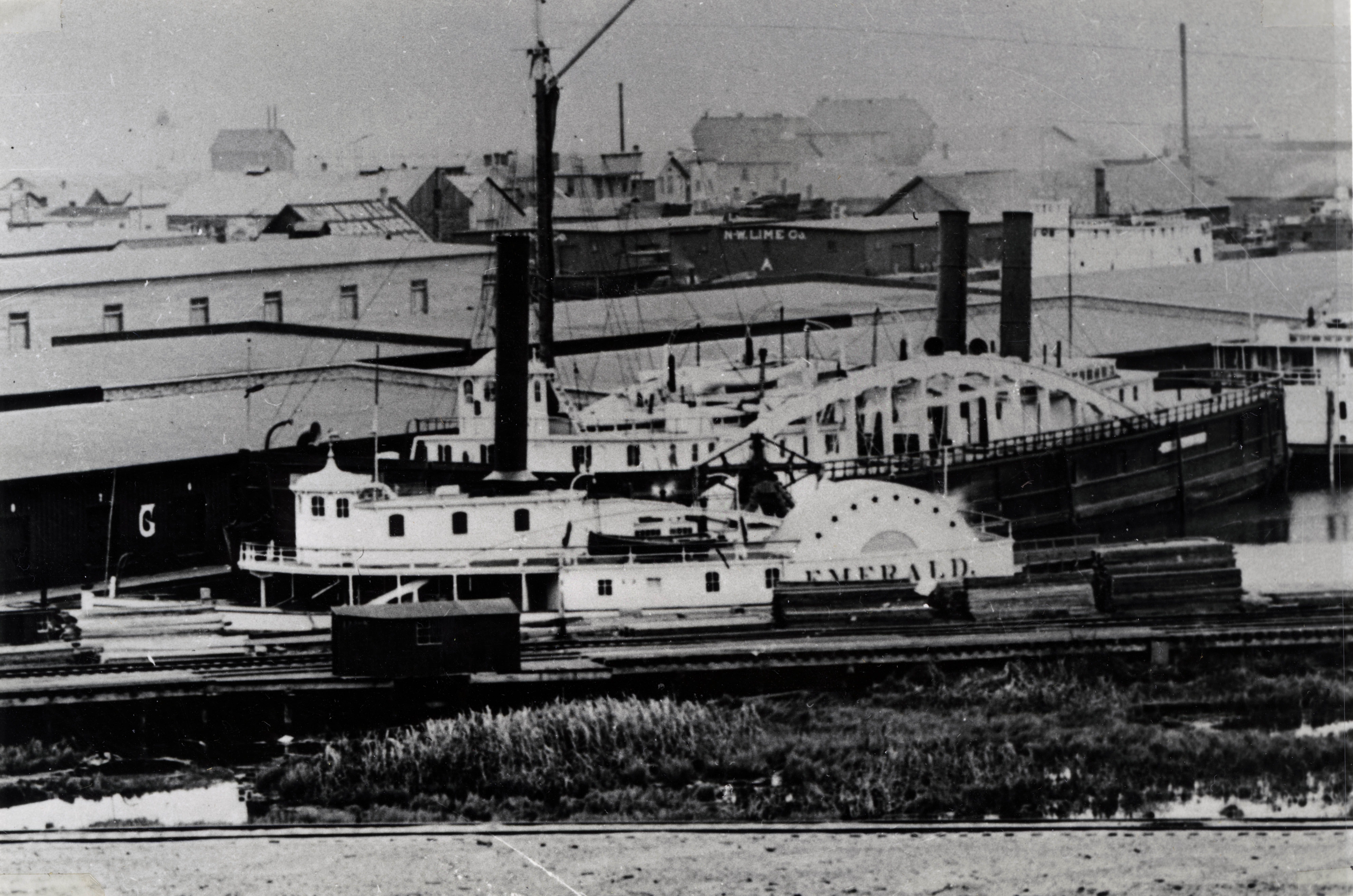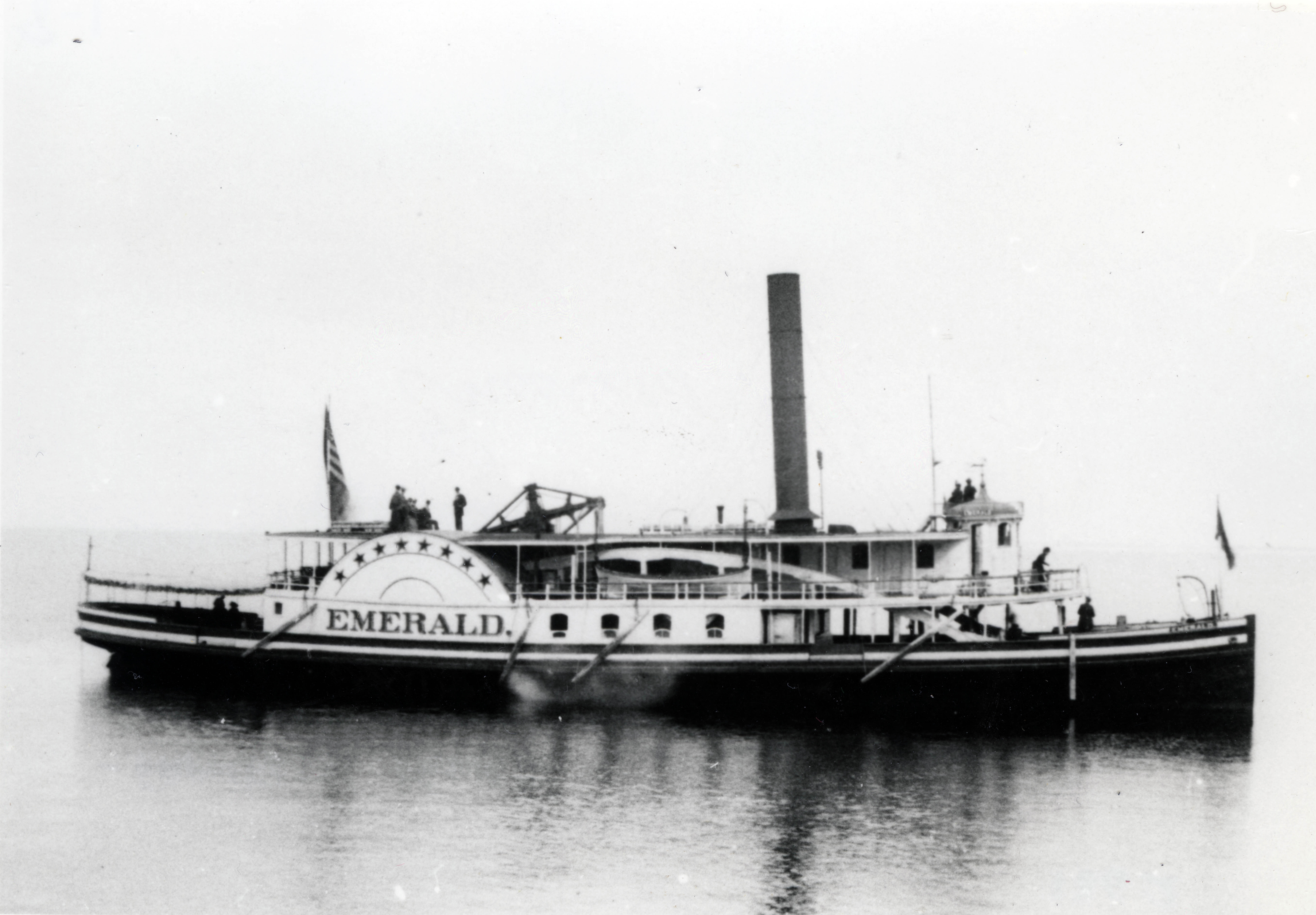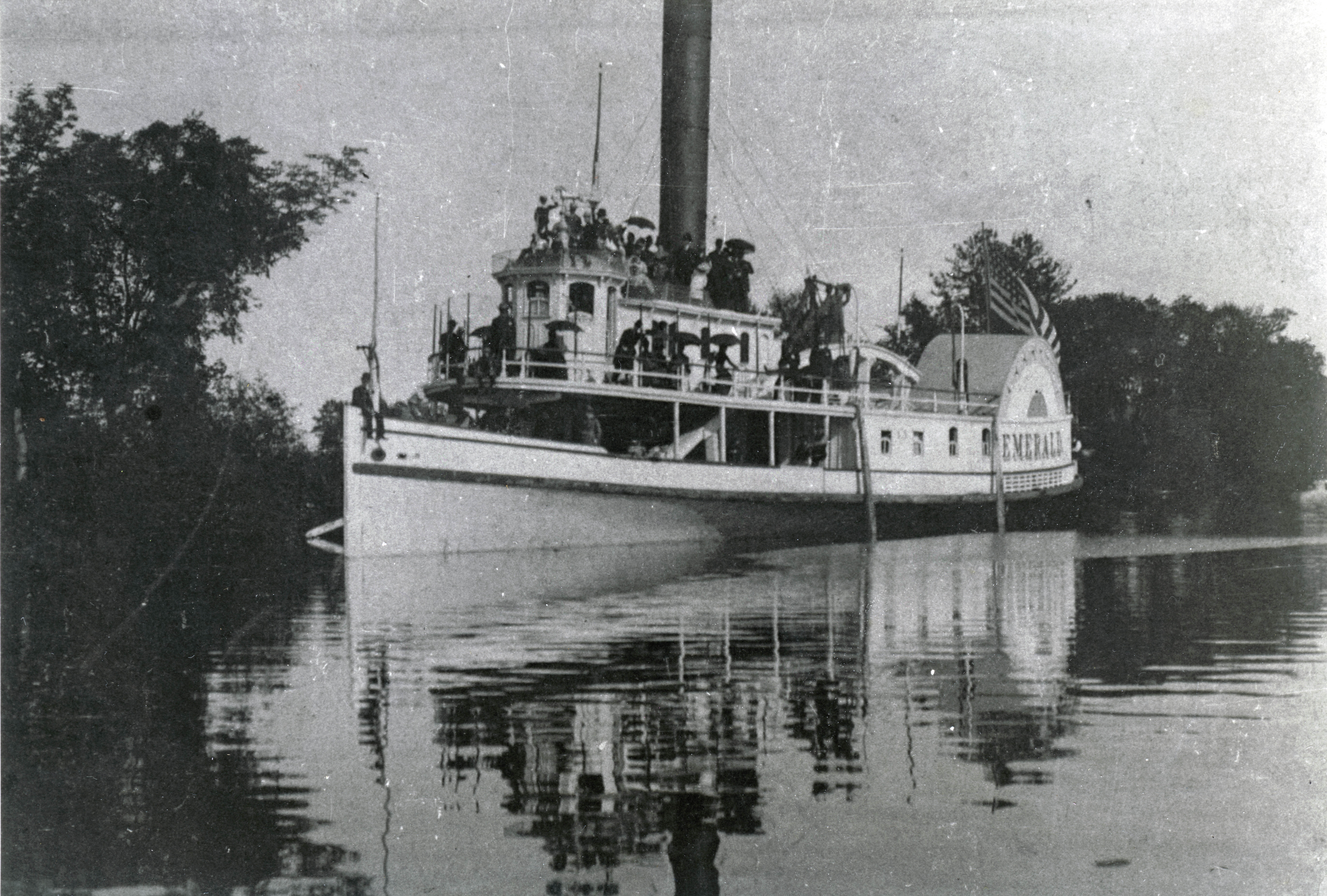Service History
The sidewheel steampaddle
Emerald was built in 1862 at Algomac, Michigan to be used as a packet steamer around the Great Lakes. The
Emerald was brought to the Ashland area in the 1880's to tow logs from the north shore of Lake Superior and to carry excursionists around the Apostle Islands and between Ashland, Bayfield and Washburn.
Besides being an excursionist and packet steamer the
Emerald was also known as a wrecking steamer; "In the spring of 1892 Mr. McAfee was appointed chief engineer of the side-wheel steamer
Emerald of Ashland, in the excursion business. She carried a wrecking outfit and was also engaged in trying to locate the wreck of the
Pewaubic..." History Of The Great Lakes, page 1143. Besides locating the wreck of the
Pewaubic and sending a diver down on her (who later died on the wreck), "the
Emerald was chartered to raise the sunken ore steamer
Lucerne, which lies in 20 feet of water near Madeline Island, 20 miles from Ashland..." Buffalo Enquirer July 11, 1892.
Note: The well known three masted schooner (not steamer) Lucerne is located on the northeast side of Long Island near Ashland in 24 feet of water and the hull is still pretty much intact and a well known dive site.
Final Voyage
It appears that the
Emerald last sailed in 1893 and was abandoned sometime after then. The last listing of the
Emerald in the Merchants Vessels Of The United States is in 1902. The vessel settled in about fifteen feet of water just west of the Lake Superior District Power Plant in Ashland Harbor. Another reference states that the vessel lies "in about fifteen feet of water, right alongside the old W.R. Durfee's dock, between the power plant and the pig iron dock".
Today
The remains of the
Emerald lies in fifteen feet of water just west of the Lake Superior District Power plant in Ashland. The wreck was salvaged after abandonment; boiler, walking beam engine and additional machinery removed for scrap metal to be used in the war.





 Confirmed Location
Confirmed Location
 Unconfirmed location
Unconfirmed location